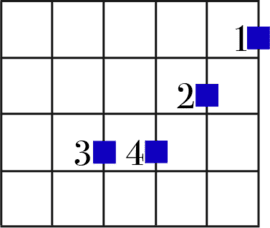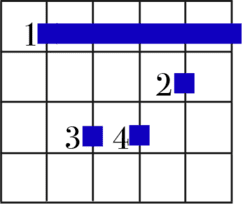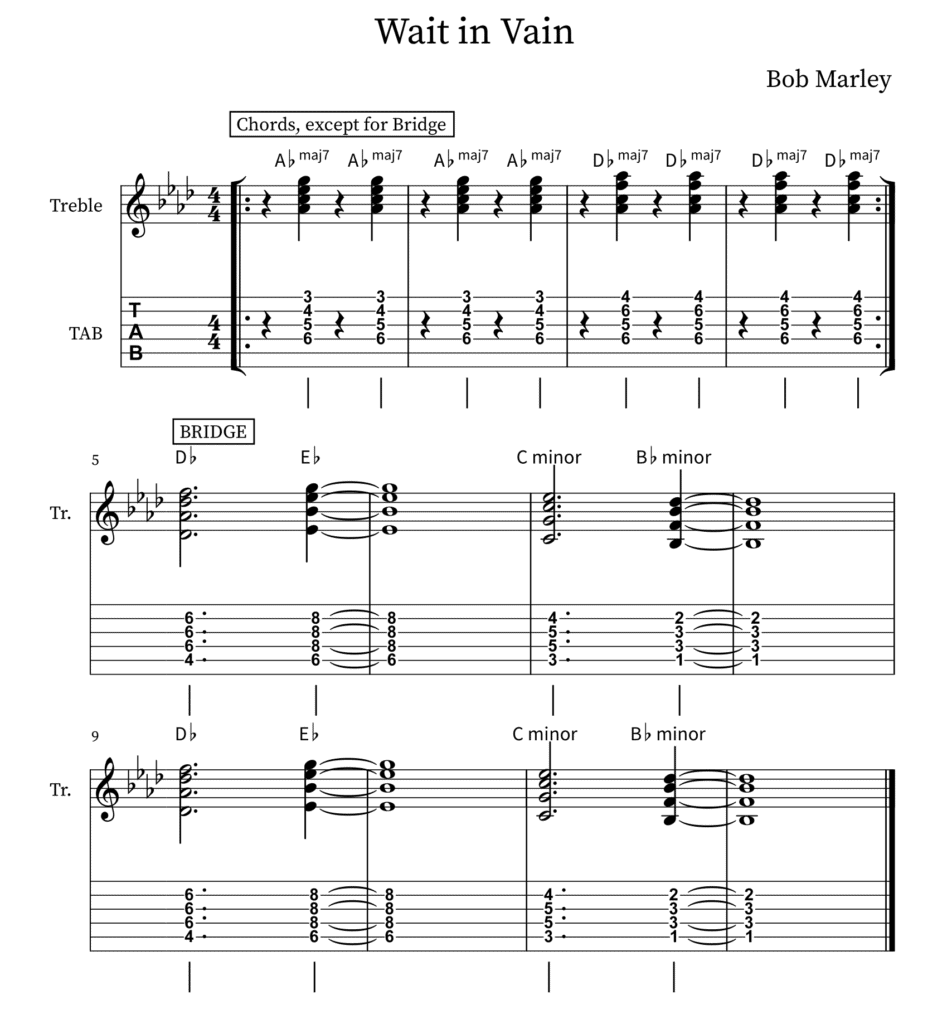Beautiful Reggae Music!
Welcome to an introduction to playing reggae guitar on my music website!
To play reggae guitar, you skank by playing chords on the 2 and the 4 (or on the upbeats, depending how you count).
Some folks play the skank with a downstroke and some with an upstroke strum.
The best ways to learn reggae: go to shows and play along to records – and play with other musicians!
You want to get the right chords but the main thing is to get the right feel, so open up your ears and heart!
There’s other stuff too, like soloing. Use pentatonic and blues scales, as well as minor and major scales. Please check out some more ideas (chords, scales, songs) below!
Table of Contents
Questions? Ideas?! Lessons & Coaching!
Best wishes and hope this helps!
Questions, Ideas, Comments? Please leave a comment and/or send a message!
Also, if you’re interested in personal coaching and lessons, please check out:
Stick Bass
And another big thing is stick bass.
To play stick bass, you usually play what the bass player is playing, or something related. It’s always somewhat muted (with the picking hand’s palm).
Bob Marley’s Stir it Up has stick bass – the bass line to Stir It Up is very well-known. Please check out the section below about Stir It Up.
I don’t really get into stick bass in this lesson, but basically you start by learning the bass line to a song and then doubling it on guitar while somewhat muting the strings.
I’m still learning a lot about reggae but hopefully I can help you out some!
Get Up, Stand Up
Check out this lesson on how to play Get Up, Stand Up if you’d like to learn more.
To play this song, play a C minor chord (after the intro)!
Try skanking on the 2 and 4 (or the upbeats, depending on how you count).
Here’s two ways to play a C minor chord:


If you want to try soloing over the song, check out the section on scales below. One ideas – try the minor pentatonic and/or minor blues scales (see the scale below) with finger 1st on the 8th fret.
Stranger in Town – Great Song by Gregory Isaacs!
At some point I’d like to add some other songs. The following is one of my favorite songs albums – Night Nurse! Hope you enjoy, please consider listening while you check out the lesson.
Chords and Stick Bass
The chords are C major (2 strums) and G major (2 strums). Check out the stick bass, too. It’s in C pentatonic major. Please check out the section below to learn about pentatonic scales. If you learn the f of C major pentatonic scale, you will know the notes to play (most of) the bass line and stick bass!


If you have any questions, comments, ideas, and/or suggestions, please write me!
Learn Reggae Guitar – Lesson 10

I actually started this page as part of a 12 lesson beginner guitar class. This is the outline and overall message/main points for this lesson (lesson 10 of 12), and below, the main points of the beginner class (I think the ideas could apply to almost anyone – I try to keep them in mind!)
- Chords
- Simple reggae riddims
- Scales
- Playing the major scale, the major pentatonic scale and the blues scale – how it relates to soloing and stick bass
- Musicality
- Playing along to Stir It Up, Mr. Brown, There She Goes, Wait in Vain, Cool Down the Pace, I’ve Got You Babe
- Exercises
- Reggae riddim – practice strumming with muted strings along to recordings!
The main points for the beginner guitar course:
- keep your hands relaxed
- keep your guitar in tune
- play in time, with the rhythm
- musicality always beats technicality
- practice too slow instead of too fast
- play along to records whenever you can
- play with other people whenever you can
Reggae Musical History
Brief Musical Background
Most chords in reggae are the same chords you would find in rock and roll, though reggae uses a lot of bar and half bar chords and not many open string chords . You can control how long the notes ring a lot easier with bar chords than with open chords.
Dub does seem to have some more jazz chords, though. We are going to learn different ways to play the same chords that were used in lesson 8 (50s rock and roll in G except the e minor), but with different voicings. In other words, we’ll play the same chord but in a different part on the guitar.
If you listen to early Bob Marley recordings, you can hear the three and four chord 50s rock and roll/doo wop sound in some of the songs that (IMHO) people would call either early reggae or rocksteady.
If you are interested in learning a bit more about reggae history. Here’s a couple links:
This is a great video by Steve Golding. He talks about reggae, ska, mento, rocksteady.
Here’s a quick overview of some of the different drumbeats you may hear in Jamaican music.
Learn Reggae Guitar Chords
Partial Bar Chords
Though one can play reggae guitar using the chords we already know, it is an appropriate time to learn bar chords. Bar chords are used in all styles of music. Partial chords are easier to learn and you can start playing them in a day or two. Basically, you use the same finger of your left hand to play more than one note.
- keeping the rhythm is more important than playing all the notes
- play in time
| G | C | D | C |
Full bar chords
Full bar chords are for lesson 11, but since a lot of people seem to be stopping by the reggae page, I’ll include them here. If you hand hurts from playing a full bar chord, just play the partial chords listed above. You see in the videos that the guys are playing the full bar, but to me it sounds like they are mostly playing the higher notes of the chord.
How To Play Reggae Guitar with TUFF LION | ArtofReggae.com
Playing on 2 and 4
In reggae, the general rule of thumb is that the guitar plays on the 2 and 4 or on the ‘and’ of each beat, depending on how you count the beat.
For example, in “Wait in Vain“, you could say the guitar was on the 2 and 4 or the ‘and’, depending on how you count the beat.
If you listen to people playing, usually the guitar plays something along those lines, but it isn’t exactly always the 2 and 4 or the ‘and’. Besides playing on the 2 and 4, a lot of times people downstroke on 2 and 4, upstroke on the ‘and’ of 2 and 4, like in Stir it Up, which you can listen to farther below.
Before you even start playing chords with songs,
You can just mute the strings with your left hand (or right of you’re playing lefty).
Then, play along to the song with the guitar with your right hand.
It’ll sound like you are chicken-scratching like in funk, but you’ll be amazed at how much you learn about the groove by doing it that way.
Major Seventh Chords
Wait in Vain
Main Chords
The two main chords are Ab major 7th and Db major 7th. For the Db major 7th, you don’t need to bar the chord (even though that’s “technically” the Db major 7th chord). Play it without the 5th string note.
For skanking, try aiming to playing the top notes (high-note strings), and mostly just strum 3 or 4 strings.


But really play the Db chord like this:

Bridge Chords
The bridge is Db major, Eb major, C minor, Bb minor. 2 times!
Check out the recording. This guitar part is more of big chords, not skanking.


If you don’t want to do the bar chord, that’s fine. Try these instead:



Soloing – Melodies
Try playing the minor pentatonic scale pattern (shown below in the scale section) with C minor pentatonic scale: 1st finger on the 8th fret and/or F minor pentatonic scale: the 1st finger on the 1st fret. Or you can play the major scale pattern with the Ab major scale: 1st finger on the 3rd fret (also shown below).
Remember to sing and/or hear the note in your head when you play single-line stuff on guitar.
IMHO, it usually helps the notes be more musical!
Scratching the strings
One of the most beautiful things about playing guitar is all the different sounds you can get just with your two hands.
Like in funk and flamenco and country, reggae players add a lot of depth and groove to their playing by gently muffing or muting the strings during or right after they play them.
You have to find the sweet spot and then you get a thicker sound.
Scales (Soloing and Stick Bass)
You can look at other lessons in the guitarkitchen to find out more about scales. Lesson Two starts with a vamp over a pentatonic scale.
If you are familiar with that form of the pentatonic, check out lesson seven for a different form.
Anyways, here are a few of main scales: blues, pentatonic, major. If you listen to the songs below, I’ll include some tips for different scales you can use with the songs.
C major or a minor Pentatonic!
You can use this C major scale to solo/play over I’ve Got You Babe by Lucky Dube (check below for the video and chords, too).

C major or a minor blues scale
The red dot is the blue note.

C major, D minor or D Dorian minor (A bit of theory)
Check out lesson eight to learn more about the relation between pentatonics and major scales.
For a C major chord, the root (C major) would be at the 8th fret, 6th string. Another name for major is Ionian.
For D Dorian, the root would be the 10th fret, 6th string.
For A minor, the root would be 7th fret, 4th string.
Here’s a table – it’s basically to show you a little bit about how some of the major and minor chords relate in (this case) C Major.
| Root Note | C | D | E | F | G | A | B |
|---|---|---|---|---|---|---|---|
| Solfeggio Note | Do | Re | Mi | Fa | Sol | La | Ti |
| Fingerboard Location (lowest pitched note) | 8th fret, 6th string | 10th fret, 6th string | 7th fret, 5th string | 8th fret, 5th string | 10th fret, 5th string | 7th fret, 4th string | 9th fret, 4th string |
| Scale | C major, Ionian | D minor, Dorian | E minor,Phrygian | F major, Lydian | G major,Mixolydian | A minor,Aeolian, | B half-dimished, Locrian |
| Chord | C major | D minor | E minor | F major | G major | A minor | B half dimished |
| Pentatonic Scale? | C major Penta | D minor Penta | E minor Pent | F major Penta | G major Penta | A minor Penta | not really |
| Blues scale | C major blues | D minor blues | E minor blues | not really | G major or minor blues | A minor blues | not really |
| Scale Sound | Happy | Jazzy | Spain | Dream | Bluesy | Minor | Intense |

Learn more about modes at Classic FM.
Songs to practice!
These are from the Legends album. Use the major chord form that you just learned, plus this minor bar chord form. This will allow to most all these songs. This minor chord is an a minor. You can use the chord form and play it on different frets, depending on the song, just like the major chords. Even if you don’t know the chords to the song, just mute the strings with your left hand and lock into the groove.
Bob Marley!

Stir it up
Chords and Song Structure
There’s two parts to the song.
The first part of the song
The chords are A, A, D and then E.
These three chords are the same chord forms as the G, C, D chords that are shown above. Instead of playing on the 3rd, 8th and 10th frets, play them on the 5th, 10th and the 12th frets.
If the 12th fret is hard to play, you can play it as an open chord.
You can also use the second chord form shown below. Then you can play the A chord on the 5 fret and change chord forms to D (2nd fret), and E (4th fret).


The second part of the song
It uses the A and D chords.
Scales, bass line and solos
Use the C major, C pentatonic, and blues scales show above. But move everything down 3 frets. So instead of 1st finger on the 5th fret, it would be on the 2nd fret.
You can also move all the scales higher up if your guitar has a cutaway to play higher notes, so 1st finger would be at the 14th fret.
Check out the bass and drums
Listen to the bass. Stir It Up has a really famous bassline.
The bassline corresponds to the chords. When the bass line changes, you need to play the part that is just A and D.
Incidentally, listen to the drums too.
He’s playing a one drop beat. Literally, you drop the one, but usually people play the hihat. Basically, you play the hihat each beat but cross stick and play the bass drum on the 3.
There are variations but especially in the beginning he’s playing one drop.
I also just added a lesson about Stir It Up from someone on YouTube. She’s got a nice feel and a good voice.
Actually this is a drum clip from Horsemouth jamming with a bass player. I love watching reggae drummers because it’s so mysterious they get such a big beat from playing so few notes!
Mr. Brown
I love this song. I haven’t really figured out what it is about. Who’s Mr. Brown?
It’s got three chords. C# (C sharp) F# (F sharp) G# (G sharp) and then it goes back to F# (F sharp).
It’s the same chord form as the C major chord but it goes from the 9th fret to the 2nd to the 4th to the 2nd. Well, there’s another part, too – I will add this soon.


There She Goes
Beautiful rocksteady!
Most of the song is Db major, Bb minor, Gb major, Ab major. Everything is tuned a little bit lower than what we are used to hearing (with A440). It sounds great.
There’s part that goes between Gb major and Ab major.
Check out the guitar rhythm – it’s different than the “reggae rhythm”.




Just a side note, instead of saying Db, Bb, Gb and Ab. You can say C#, A#, F# and G#. Db equals C#, Bb=A#, Gb=F#, Ab=G#. It’s basically the same thing. So this song has some of the same chords as Mr. Brown.
Gregory Isaacs!
Beautiful – I keep coming back to this album! Bb (B flat) major (C major chord down 2 frets) and C minor (A minor chord up 3 frets!).



Sly and Robbie!
Here’s another beautiful song where you can hear the snare and bass drum on the ‘3’.
The chords are F# minor 7th and B minor.




Lucky Dube!
A beautiful song! Here’s the chords. It’s basically C-F-G-F throughout most of the song, except the Pre-Chorus follows a different progression. Please check out the chart I made.


Credits
Thanks for the main picture from dubdem!
Thanks to pdf2png for converting pdfs!
My Instrumental Jazz Reggae Recordings
Here’s some stuff that I’ve done – nothing too big, but you might want to check it out!
Once in a while, I’ve been making a sort of chill instrumental jazz guitar reggae jam. Hope you enjoy!
Here’s a playlist of some tracks I’ve done.
Practice Makes Progress
Thanks for checking out this lesson! Hope it helps!
All the best!
Best wishes!
Peace and Love!
If you have any questions, comments, suggestions and/or ideas, please comment below and/or contact me! Thanks and take care!
- Kindness in Learning Music
- Six 5-10 Minute Groove Practice Ideas!
- Singing & my Learning Experiences as a Guitarist!
- Positive Self-Talk in Life and Music
- WHY MULTI-INSTRUMENTALISM?
- Learning Multiple Instruments for Enjoyment and Musicality
- How to Play Drums (for Guitarists)!
- Beginner’s Course
- 30 Lessons in Jazz Guitar (Groove, Fundamentals, Soloing, Songs)
